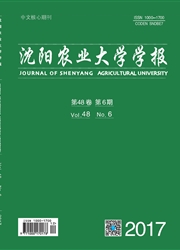

 中文摘要:
中文摘要:
为了建立黄土高原生态治理评价体系和选择合适的评价方法,选取陕北各县多年观测资料,建立黄土高原生态综合治理评价指标体系,应用层次分析法、灰色聚类法和Topsis法对各县域生态治理效益进行了分析评价。结果表明:在陕北黄土高原生态治理过程中,坝地面积、治理度和单位面积投资是该地区生态治理评价体系的主要影响因子,在实际运行中应加以重视;各县域生态治理局势存在波折,但整体呈良性发展,并为良好治理措施的选择提供现实依据,评价结果与实际情况相符。生态治理效益评价体系的建立以及这3种方法的结合运用为县域生态治理效益评价工作提供科学依据,有利于黄土高原生态治理局势的综合管理与宏观调控。
 英文摘要:
英文摘要:
In order to establish the evaluation system of ecological control and select the evaluation method in loess plateau. Observation data of six countries in northern shaanxi for many years were selected,comprehensive governance index system for ecological control was established,AHP and grey clustering method and Topsis were used in the analysis and evaluation of harnessing benefit of ecological control in loess plateau. The results showed that dam land area governance degree and unit area investment were main affecting factors in ecological control evaluation system in these areas. These factors should concerned in practical application. The establishment of evaluation system of ecological control and application of these three kinds of methods could provide reliable basis for scientific evaluation of ecological control.
 同期刊论文项目
同期刊论文项目
 同项目期刊论文
同项目期刊论文
 期刊信息
期刊信息
